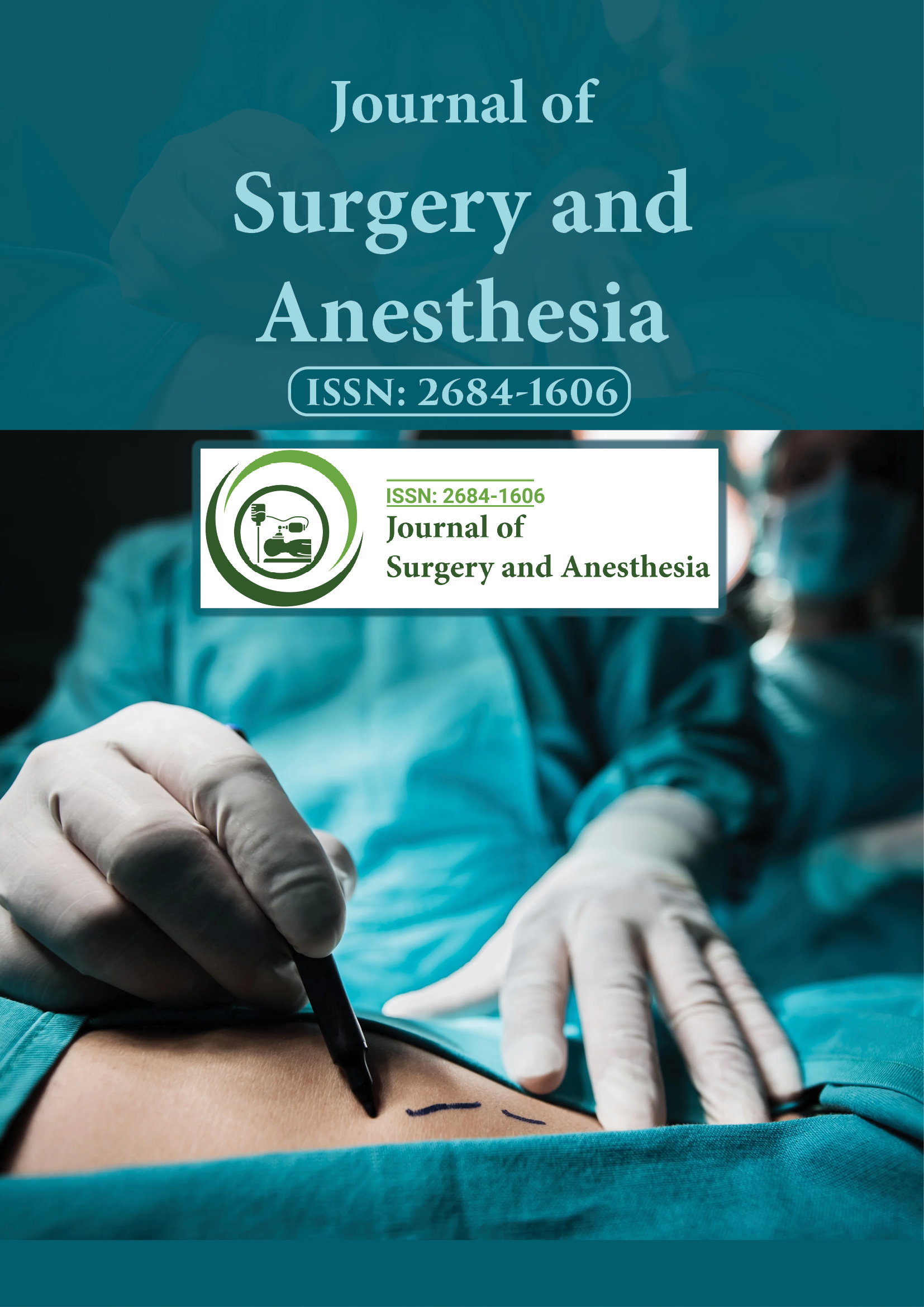Indexed In
- Google Scholar
Useful Links
Share This Page
Journal Flyer

Open Access Journals
- Agri and Aquaculture
- Biochemistry
- Bioinformatics & Systems Biology
- Business & Management
- Chemistry
- Clinical Sciences
- Engineering
- Food & Nutrition
- General Science
- Genetics & Molecular Biology
- Immunology & Microbiology
- Medical Sciences
- Neuroscience & Psychology
- Nursing & Health Care
- Pharmaceutical Sciences
Commentary - (2025) Volume 9, Issue 1
Innovations in Surgical Techniques for Better Patient Outcomes
Hiroki Nakamura*Received: 01-Mar-2025, Manuscript No. JSA-25-29045; Editor assigned: 03-Mar-2025, Pre QC No. JSA-25-29045 (PQ); Reviewed: 17-Mar-2025, QC No. JSA-25-29045; Revised: 24-Mar-2025, Manuscript No. JSA-25-29045 (R); Published: 31-Mar-2025, DOI: 10.35248/2684-1606.25.9.277
Description
The field of surgery has experienced remarkable progress over the last few decades, with surgical techniques continuously evolving to improve patient outcomes, minimize complications, and accelerate recovery. Innovations in technology, coupled with refined clinical protocols, have transformed both the practice and perception of surgery. This article highlights some of the most significant advancements in surgical techniques and their impact on modern healthcare.
One of the most transformative developments in surgery is Minimally Invasive Surgery (MIS). Unlike traditional open procedures that require large incisions, MIS utilizes small incisions, specialized instruments, and often a camera (laparoscope) to perform operations with greater precision. Laparoscopic surgeries, for instance, have become the standard for many abdominal and pelvic procedures due to reduced blood loss, shorter hospital stays, and quicker return to daily activities. Patients benefit from smaller scars, less postoperative pain, and a lower risk of infections.
Building upon MIS, robotic-assisted surgery has added a new layer of accuracy and control. Robotic systems, such as the da Vinci Surgical System, allow surgeons to perform complex tasks through tiny incisions with a magnified, high-definition 3D view and articulated instruments that mimic the movement of the human hand. These tools provide greater dexterity and stability, which is especially valuable in delicate procedures such as prostatectomies, cardiac valve repair, and gynecologic surgeries. While robotic surgery remains costly and requires specialized training, its growing adoption reflects its promise in expanding surgical capabilities.
In parallel, image-guided and navigation-assisted surgery has redefined precision in procedures involving the brain, spine, and joints. By integrating real-time imaging (MRI, CT, and ultrasound) with computer systems, surgeons can map out complex anatomical structures, plan their approach more accurately, and track their instruments during the procedure. This enhances safety, reduces damage to surrounding tissues, and improves surgical outcomes.
Another notable development is Enhanced Recovery after Surgery (ERAS) protocols. These multidisciplinary strategies are designed to reduce the physiological stress of surgery, promote faster recovery, and decrease complications. Components of ERAS include optimized anesthesia techniques, minimally invasive approaches, early mobilization, and tailored nutritional support. When implemented effectively, ERAS has been shown to shorten hospital stays and improve patient satisfaction without increasing the risk of readmission.
The integration of advanced anesthesia techniques also plays a vital role in the success of modern surgical interventions. Regional anesthesia, for example, allows targeted numbing of specific areas, reducing the need for general anesthesia and its associated risks. Additionally, the use of ultrasound guidance has significantly improved the accuracy of nerve blocks and epidural placement, increasing their safety and efficacy.
Surgical simulation and Virtual Reality (VR) training are revolutionizing how surgeons acquire and refine their skills. VR platforms offer immersive, risk-free environments where trainees can practice a range of procedures, from suturing to complex laparoscopic techniques. These technologies help build confidence, enhance decision-making, and reduce errors during actual surgeries.
Finally, personalized surgery, supported by 3D printing and patient-specific implants, is gaining ground. Surgeons can now create custom models of a patient's anatomy to pre-plan surgeries or produce implants tailored to unique structural needs. This customization enhances the fit, function, and longevity of surgical outcomes, particularly in orthopedic and reconstructive surgery.
In conclusion, surgical techniques continue to evolve through the integration of technological innovation, refined operative methods, and patient-centered care protocols. As the future unfolds, the synergy of robotics, artificial intelligence, precision imaging, and personalized medicine promises to make surgery safer, less invasive, and more effective than ever before. For practitioners and patients alike, these advancements signify a new era in surgical excellence and recovery.
Citation: Nakamura H (2025). Innovations in Surgical Techniques for Better Patient Outcomes. J Surg Anesth. 9:277.
Copyright: © 2025 Nakamura H, et al. This is an open-access article distributed under the terms of the Creative Commons Attribution License, which permits unrestricted use, distribution, and reproduction in any medium, provided the original author and source are credited
